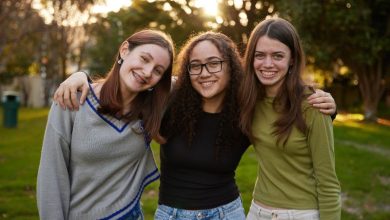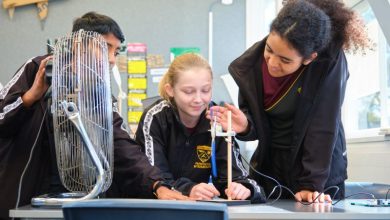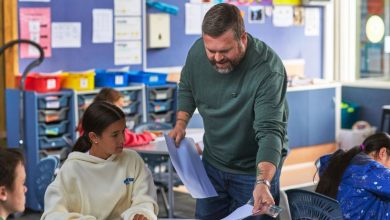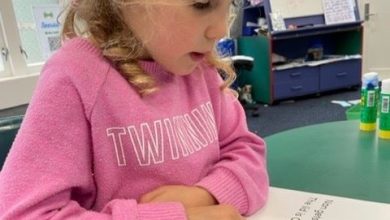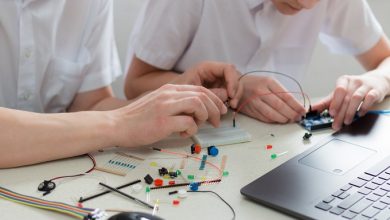Science learning is key to citizenship, say teachers
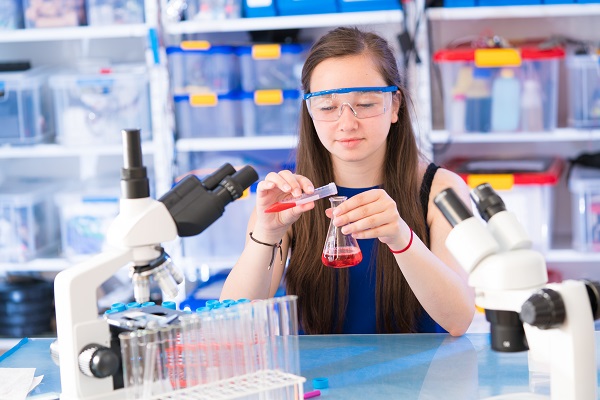
Quality science education in our schools – primary and secondary – is crucial, not just for those who want a career involving science, but “an essential component of core knowledge that every member of our society requires,” says science advisor to the prime minister, Sir Peter Gluckman.
“There is no doubt that the role of science in modern society is changing. It is very different to that of a generation ago.” Sir Peter says that the challenges we face as a community depend on science, not only global issues such as climate change, but local problems too – how to cope with an ageing population, for example, and how to improve economic productivity.
Accordingly, science education is changing rapidly. Science lessons in New Zealand schools have come a long way from the days of “transmission education” in which the teacher had the answers and students were expected to absorb what they were told. Today the relationship between teachers and students is an aiako approach to exploration with just-in-time opportunities for learning. This emphasises student work as a starting point and promotes positive feedback learning cycles. Questions are open-ended and a route to an endpoint may be ambiguous, and the ‘result’ may be different to the predicted outcomes.
 “Today we possibly don’t know what we are going to find out,”says Pru Casey, head of biology at Otago Boys’ High School. “I’m learning as the students learn and that’s very exciting, whether at the top end of the school or with my youngest pupils – about how science is working for them. It’s very much more of an authentic exploration.
“Today we possibly don’t know what we are going to find out,”says Pru Casey, head of biology at Otago Boys’ High School. “I’m learning as the students learn and that’s very exciting, whether at the top end of the school or with my youngest pupils – about how science is working for them. It’s very much more of an authentic exploration.
“It’s a tremendous change from when I started teaching 35 years ago. Teachers in the past may not have said ‘I don’t know’ and children may have been reluctant to challenge the teacher.”
Recently Ms Casey’s year eleven students investigated the effect that the dredging of the Otago harbour would have on photosynthetic rates in seaweed and change of C02 in the water, changed distribution of invertebrates and the pH of sea water, and the effect it had on plankton.
“For their exploration they gained credits, each group doing a different exploration, and none of us knew what we’d find out.
“Science is about learning to learn and learning to work hard. It involves group work, inquiry, technical skills, fine motor skills and critical thinking. Not all my students will go on to work in science, but they will come away with values and competencies that they can use in whether they are lawyers, fathers, rugby players or engineers.”
These values and competencies are at the heart of VEX Robotics, classroom based competitions now 10,000 teams across 33 countries. VEX promotes a culture of “gracious professionalism” – sharing and working together rather than winning at all costs.
Teacher Dave Aston, who leads the robotics program at Glenfield College, recalls an incident from a national competition. “Some new students turned up and their robot wouldn’t go. Two students and teachers from other schools provided encouragement, suggestions, and parts. So instead of giving up and not coming back, the students went home that evening and rebuilt their robot so that it was ready for the next day’s competition.”
Chris Hamling is national manager for Kiwibots, which supports and maintains VEX robotics competitions in New Zealand and supports them in Australia. “The idea is to create to a field of dreams to get kids excited about science and technology,” he says. “It’s growing and going very well, but what we’ve found is that there are a large number of teachers who need support in navigating what is a potentially confusing landscape that they find themselves in.
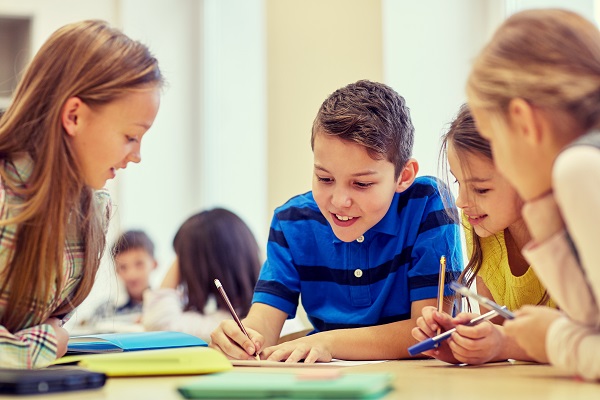 “We don’t have enough teachers who can teach software and robotics in our schools. The same occurs in the USA, and the USA has created some very strong curriculum material to support not only the mechanics but the software of the program. One platform that is easy to pick up is the Robot Virtual Worlds because it allows teachers to teach robotics in the classroom and not have real world robots, it can all be done in a virtual world. The other advantage is that free CAD software from Autodesk allows you to design your own virtual worlds for the robots allowing students to create their own worlds for other students to explore.
“We don’t have enough teachers who can teach software and robotics in our schools. The same occurs in the USA, and the USA has created some very strong curriculum material to support not only the mechanics but the software of the program. One platform that is easy to pick up is the Robot Virtual Worlds because it allows teachers to teach robotics in the classroom and not have real world robots, it can all be done in a virtual world. The other advantage is that free CAD software from Autodesk allows you to design your own virtual worlds for the robots allowing students to create their own worlds for other students to explore.
“A lot of schools have gone down the route of very basic robots that don’t do a lot, they’re teaching students how to make little bugs that move around on the table. But by using the virtual world and interacting in the virtual arena, you can do a lot of complex mechatronic tasks as opposed to simple software. It also allows teachers to follow students’ activities.”
The big advantage is the small price tag; the only cost is buying an emulator. A licence for 30 computers is US$300 (NZ$420) a year, “the cost of two little robots”, and users can also switch worlds to the real world robot.
“It’s not a Mickey Mouse outfit, it’s cheap because it is funded through a vast amount of sponsorship in the States. It’s your STEAM curriculum in a box, almost. If your school is looking to set up a robotics program, I would urge you not to make a decision until you have seen what’s available on this.
Mr Hamling says Kiwibots has no vested interest in Robot Virtual Worlds, “we just want to get the word out that it’s phenomenal. The curriculum and the teachers’ support materials are free.”

